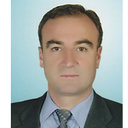Coffin-Siris syndrome with café-au-lait spots, obesity and hyperinsulinism caused by a mutation in the ARID1B gene.
Avainsanat
Abstrakti
Coffin-Siris syndrome (CSS) (MIM 135900) is characterized by developmental delay, severe speech impairment, distinctive facial features, hypertrichosis, aplasia or hypoplasia of the distal phalanx or nail of the fifth digit and agenesis of the corpus callosum. Recently, it was shown that mutations in the ARID1B gene are the main cause of CSS, accounting for 76% of identified mutations. Here, we report a 15 year-old female patient who was admitted to our clinic with seizures, speech problems, dysmorphic features, bilaterally big, large thumb, café-au-lait (CAL) spots, obesity and hyperinsulinism. First, the patient was thought to have an association of neurofibromatosis and Rubinstein Taybi syndrome. Because of the large size of the NF1 gene for neurofibromatosis and CREBBP gene for Rubinstein Taybi syndrome, whole exome sequence analysis (WES) was conducted and a novel ARID1B mutation was identified. The proband WES test identified a novel heterozygous frameshift mutation c.3394_3395insTA in exon 13 of ARID1B (NM_017519.2) predicting a premature stop codon p.(Tyr1132Leufs*67). Sanger sequencing confirmed the heterozygous c.3394_3395insTA mutation in the proband and that it was not present in her parents indicating de novo mutation. Further investigation and new cases will help to understand this phenomenon better.


